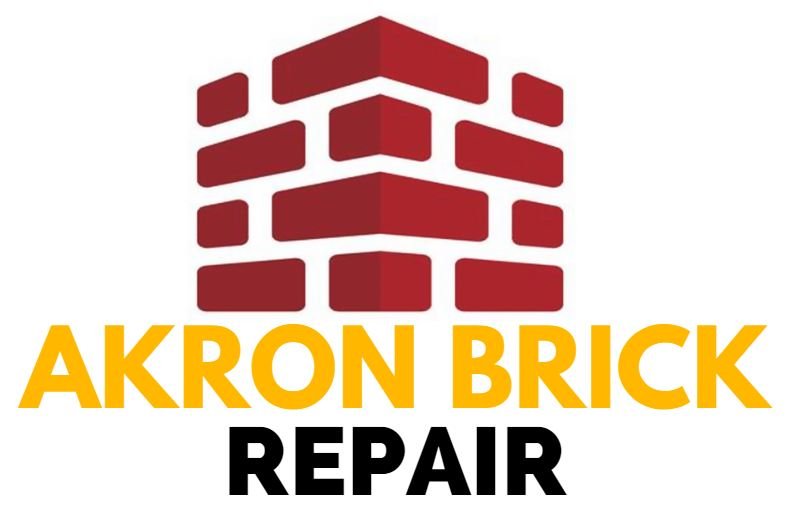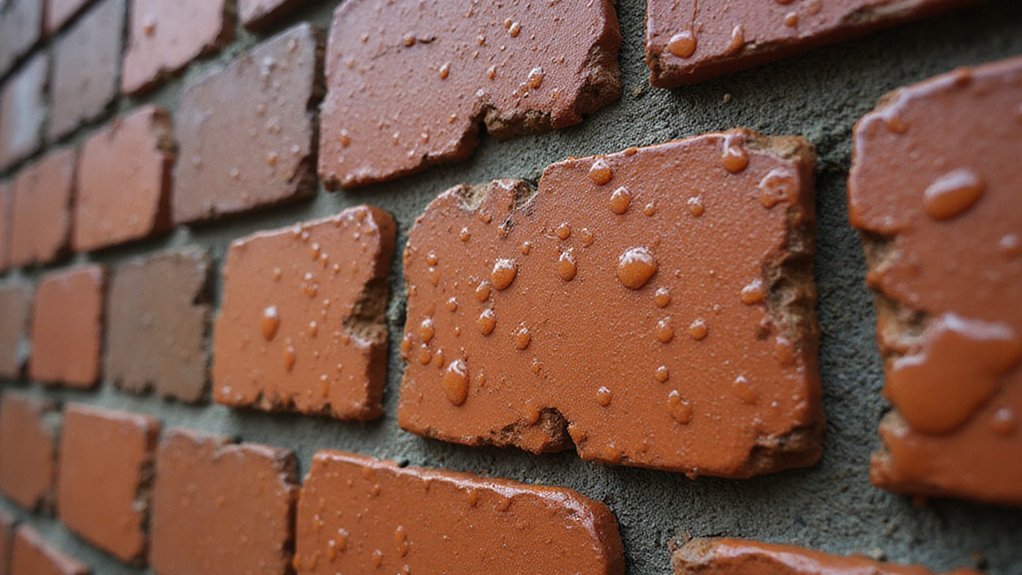As spring rains pour down, your home’s brickwork becomes a storyteller of hidden structural secrets. Water has an uncanny ability to expose underlying masonry issues that might otherwise remain unnoticed. Those seemingly harmless droplets can reveal critical information about your home’s exterior integrity, potentially saving you from costly future repairs. What subtle signs are your walls trying to communicate?
Signs of Mortar Deterioration
Spring rains can expose hidden vulnerabilities in your home’s masonry, and mortar deterioration is often the first sign of potential structural issues. You mightn’t notice unseen crumbling happening between your bricks, but water can quickly reveal concealed joint failure.
Look for white powdery residue, tiny cracks, or areas where mortar seems to be disintegrating. When moisture seeps into weakened joints, it can accelerate damage and compromise your wall’s stability. Don’t ignore these subtle warning signs – they’re your home’s way of communicating potential problems before they become costly repairs.
Particularly in chimneys and exposed walls, these structural vulnerabilities can rapidly deteriorate when left unchecked by professional masonry contractors.
Identifying Hidden Brick Cracks
Water’s silent invasion can expose brick vulnerabilities that often remain hidden from casual inspection. You might notice subtle signs like hidden brick discoloration, which could indicate underlying brick damage lurking beneath the surface. Check your walls carefully after heavy spring rains. Look for hairline cracks running vertically or diagonally across bricks, especially near windows and doors. These tiny fractures can signal potential structural stress that’ll worsen if left untreated. Don’t ignore small changes—they’re often early warning signs of more significant problems waiting to emerge. Brick coloring techniques can help restore and protect your masonry from further water-related damage, using specialized mineral repair mortars that mimic the original material’s properties.
Water Penetration and Moisture Damage
Because brick is a porous material, moisture can seep into its microscopic channels, causing progressive damage that homeowners often overlook. You’ll want to watch for telltale signs like water-related staining on interior walls or exterior surfaces. These marks aren’t just cosmetic—they signal potential structural risks.
Corrosion concerns can develop when water persistently penetrates brick, weakening mortar and compromising your home’s integrity. Unchecked moisture can lead to mold growth, deteriorating brick quality and potentially creating health hazards. Regular inspections and timely maintenance can prevent extensive damage and protect your investment.
Drainage Problems Around Your Foundation
When rainwater fails to drain properly around your home’s foundation, it can trigger a cascade of structural problems that’ll gradually compromise your property’s stability. Soil erosion patterns can develop, causing water to pool near your foundation and potentially seep into basement walls.
Cracked downspout connections might also contribute to these drainage issues, redirecting water toward vulnerable areas instead of away from your home. By identifying and addressing these drainage problems early, you’ll protect your property’s structural integrity and prevent costly future repairs. Regular inspection and maintenance are key to keeping your foundation dry and secure.
Efflorescence and Salt Deposits
Spring rains can expose more than just drainage challenges; they often reveal hidden signs of moisture-related brick damage through a phenomenon called efflorescence. Those white, powdery salt deposits on your brickwork aren’t just unsightly—they’re warning signals about underlying moisture problems.
Hidden salt sources like groundwater, construction materials, or interior wall components can contribute to seasonal salt buildup. When water moves through your masonry, it carries dissolved salts that crystallize on the surface, leaving behind a telltale white residue. Don’t ignore these signs; they could indicate serious moisture infiltration that might compromise your home’s structural integrity.
Potential Structural Weak Points
How vulnerable are your home’s brick walls to moisture damage? Spring rains can expose hidden structural weak points that threaten your foundation stability concerns.
Cracks, mortar deterioration, and water infiltration can signal potential foundation shifts that compromise your home’s integrity. You’ll want to carefully inspect walls for subtle signs of stress, like hairline fractures or discoloration near ground level.
Professional evaluation becomes imperative when you notice uneven surfaces or emerging moisture patterns. These early warning indicators can help you prevent more extensive and costly repairs, safeguarding your home’s structural health and your peace of mind.
Immediate Repair and Prevention Strategies
Recognizing potential moisture damage in your brickwork demands immediate action to protect your home’s structural integrity. You’ll want to quickly seal visible cracks and apply damp proofing measures before spring rains worsen existing issues.
A seasonal maintenance schedule can help prevent costly repairs by identifying weak spots early. Consider hiring a professional mason to assess and treat potential water penetration zones, especially near foundation areas. Waterproof sealants, proper drainage solutions, and regular inspections will safeguard your home’s exterior, ensuring your brickwork remains strong and resilient against seasonal moisture challenges.
Frequently Asked Questions
Can Rainwater Permanently Damage My Home’s Exterior Brick Walls?
You’ll risk permanent damage if water penetrates porous brick types or poorly sealed surfaces. Different paint application methods can protect your home’s exterior, preserving its structural integrity and aesthetic appeal.
How Quickly Does Water Impact Brick Mortar Stability?
Water rapidly penetrates brick pore structures, causing mortar strength degradation within weeks. You’ll notice crumbling joints and weakening surfaces, especially during prolonged spring rainfall, threatening your home’s structural integrity.
Are Older Brick Homes More Vulnerable to Spring Rainfall?
You’ll find older brick homes are more susceptible to water damage due to deteriorating brick construction quality. Regular seasonal masonry maintenance helps protect your home’s structural integrity during spring rainfall.
Will Homeowners Insurance Cover Brick Water Damage Repairs?
You’ll want to carefully review your insurance policy limitations, as water damage coverage varies. Professional inspection recommendations can help determine potential repair costs and insurance eligibility for your brick home.
Do Certain Brick Types Resist Water Penetration Better?
You’ll find that dense brick with low porosity and smooth surface composition naturally resist water penetration better than more porous clay varieties, protecting your home’s structural integrity during heavy spring rainfall.

